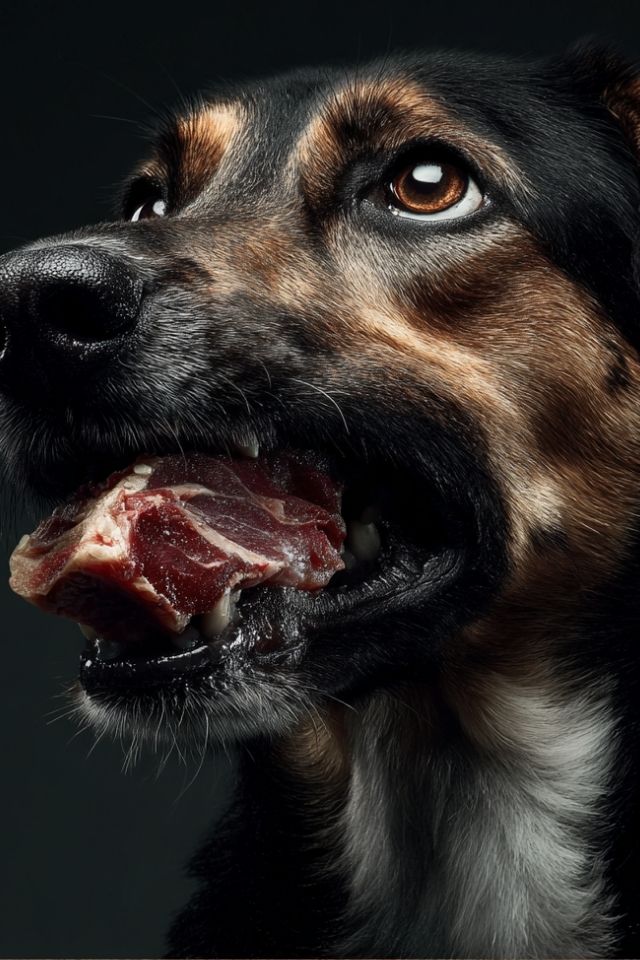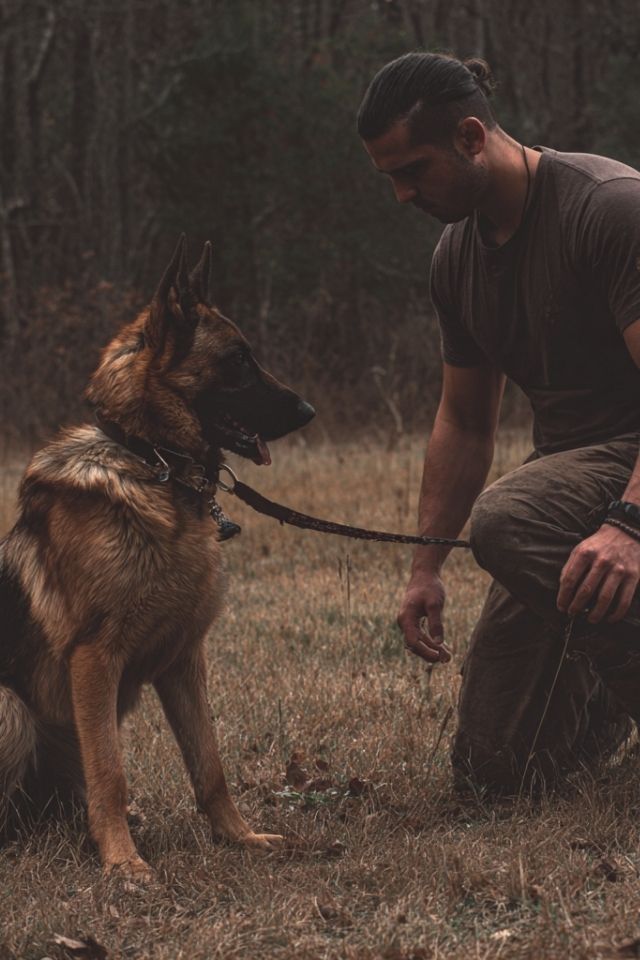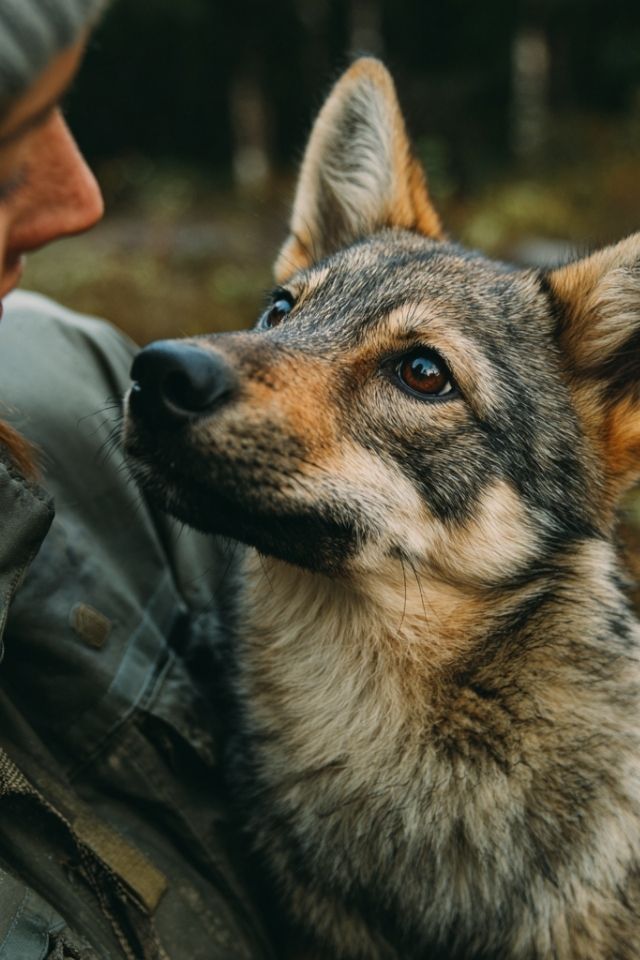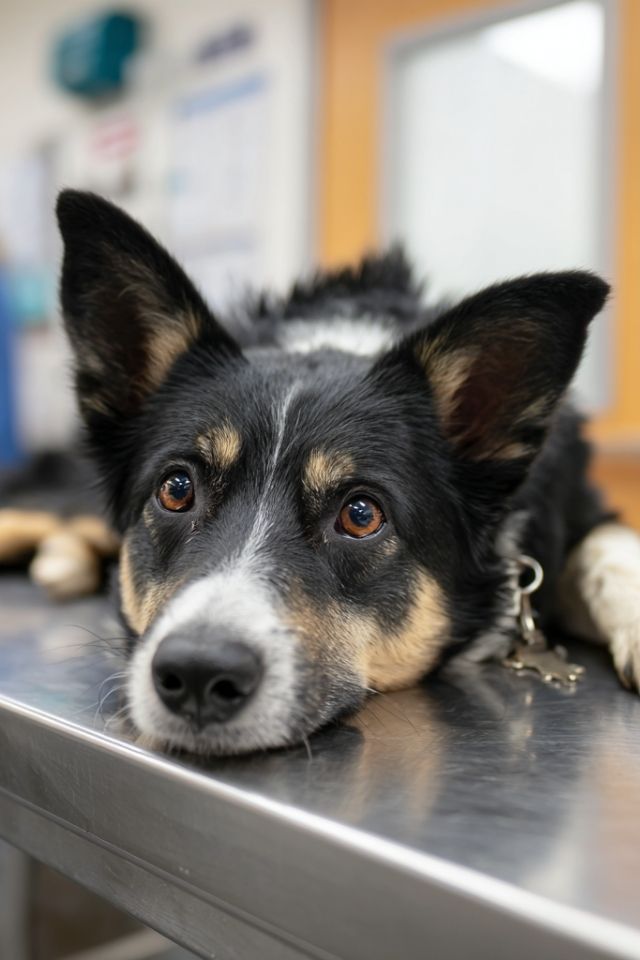The Morning That Changed Everything
Picture this: Saturday morning, sunlight streaming through the kitchen window. You call Max for his favorite game—hide and seek with his squeaky duck. But instead of the eager scramble of paws on hardwood, there’s… hesitation. A pause that wasn’t there last year. When he finally appears, those brown eyes that once sparked with mischief now carry something else. Not defiance. Not laziness. Something deeper—like watching a light slowly dim behind frosted glass.
This is the moment many of us miss. We see the extra weight, worry about joints and hearts, but fail to recognize what’s happening in the space between those soft ears. The truth is, obesity doesn’t just burden your dog’s body—it creates an invisible weight that settles over their entire being, clouding the very essence of who they are. Your dog’s NeuroBond, that sacred neural pathway connecting thought, emotion, and connection, begins to fray under metabolic strain.
What you’re witnessing isn’t just a dog getting older or lazier. You’re watching as inflammation creeps like morning fog through neural pathways, as insulin resistance starves brain cells of their vital fuel, as the gut-brain axis—that ancient communication highway—becomes clogged with dysbiotic signals. The soul you know is still there, but it’s struggling to shine through biological static. 🧠
The Invisible Leash of Metabolic Burden
When the Mind Grows Heavy
Remember when your dog could spot a squirrel three backyards away, their entire being electric with possibility? Now, even when that same squirrel practically tap-dances across your deck, there’s a delay—a processing lag that has nothing to do with disinterest and everything to do with neuroinflammation creating what scientists call “brain fog.”
Inside your dog’s mind, a storm is brewing. Chronic inflammation doesn’t respect boundaries; it seeps from body to brain, creating a constant state of neural irritation. Imagine trying to think clearly while someone plays static in your ears—that’s your dog’s daily reality. The hippocampus, keeper of memories and navigator of familiar spaces, struggles under this inflammatory burden. Those moments when Max stands in the hallway, seemingly confused about which way leads to his bed? That’s not aging—it’s his mental map becoming blurred at the edges.
The prefrontal cortex, the wise counselor that once helped him decide whether to chase or pause, whether to bark or investigate, loses its clarity. Executive function—that CEO of the brain—can no longer efficiently filter the important from the irrelevant. Every sound becomes equally demanding, every stimulus equally overwhelming. The Invisible Leash of obesity doesn’t just restrict physical movement; it tethers the mind itself.
The Chemical Conversation Falls Silent
In the depths of your dog’s being, a conversation that’s been flowing since birth begins to stutter. Serotonin, the gentle voice of contentment, grows quiet. Dopamine, the spark of joy and motivation, barely whispers where it once sang. This isn’t just biochemistry—it’s the fading of your dog’s emotional vocabulary.
Watch closely when you bring out the leash. Where anticipation once made him wiggle from nose to tail, now there’s a muted response—not because walks have lost their magic, but because the neural circuits that translate “walk” into “joy” are speaking through metabolic static. The gut, where 95% of serotonin originates, has become an unreliable narrator, its microbiome disrupted by obesity into telling stories of anxiety rather than contentment. 🐾
Reading the Unspoken Signals
The Dance of Miscommunication
Training sessions have become a delicate dance of patience. You say “sit,” and there’s that pause—not the split-second of decision, but a longer silence while the command travels through inflamed neural pathways like a message through fog. Your dog isn’t being stubborn; they’re translating your words through a brain that processes everything in slow motion.
The attentional bias that develops with obesity is particularly cruel. Imagine being in a library, trying to read, while someone consistently taps you on the shoulder. That’s how food cues hijack your dog’s attention—not through gluttony, but through rewired neural priorities. The training cue you’re giving competes with a brain that’s been reprogrammed to prioritize food signals above all else. This isn’t a character flaw; it’s neurology altered by metabolic dysfunction.
When Frustration Becomes the Default Setting
There’s a particular whine that emerges—different from the hungry whine or the need-to-go-out whine. It’s the sound of frustration incarnate, of a soul that remembers running but finds itself trapped in a body that won’t cooperate. This creates what we call the “frustration cascade”: wanting to play but lacking energy, attempting to jump but failing, trying to engage but feeling overwhelmed.
The old Max would have spent twenty minutes working that puzzle feeder, tail wagging with determination. Now, after two failed attempts, he walks away. Not from laziness, but from a problem-solving center in his brain that’s running on metabolic fumes. The mitochondria—those cellular power plants—are producing less energy, creating genuine exhaustion that seeps into every attempt at engagement. Your dog’s Soul Recall, that ability to return to their essential joyful self, becomes harder to access through layers of metabolic dysfunction.
The Stress Symphony
When Cortisol Conducts the Orchestra
In the hidden symphony of your dog’s endocrine system, cortisol has become an overzealous conductor, keeping every instrument at forte when they should be playing pianissimo. This stress hormone, elevated by obesity, maintains a constant state of physiological tension—like living permanently in that moment just before thunder strikes.
The HPA axis, your dog’s ancient stress-response system, never truly rests. Leptin, the hormone of satiety and emotional balance, shouts into receptors that have gone deaf. Ghrelin, the hunger hormone, creates a constant background hum of need. Melatonin struggles to maintain the rhythm of sleep and wake. Together, they create a hormonal storm that makes every day feel like navigating rough seas.
Watch how your dog responds to the doorbell now—not with curious alertness but with excessive alarm. Notice how recovery from excitement takes longer, how the ability to self-soothe has diminished. This isn’t a personality change; it’s a nervous system overwhelmed by chemical messengers that obesity has thrown into chaos. 🧡
The Journey Back to Light
Rewriting the Neural Story
But here’s where hope enters our story: the brain, that remarkable organ, remembers wellness. As weight begins to decrease, something magical happens. The fog starts to lift—not all at once, but in moments. First, you notice it in the morning greeting, slightly more enthusiastic. Then in the way Max’s head tilts when you ask if he wants to play, processing faster, engaging quicker.
Week by week, the transformation unfolds. The neuroinflammation that clouded thinking begins to resolve. Insulin sensitivity returns, allowing neurons to feast again on the glucose they need. The gut microbiome, with careful nutrition, begins telling stories of balance rather than chaos. The NeuroBond strengthens, those sacred pathways between thought and feeling, between your dog and you, beginning to clear.
By month three, you see glimpses of the dog you remember. By month six, it’s like meeting them anew—except better, because the journey has deepened your understanding of each other. The Soul Recall becomes possible again; your dog can access their essential self, that unique spirit that makes them irreplaceably yours.
Adapting the Dance
During this journey, your role transforms from trainer to translator, from owner to guide. Training becomes a practice of compassionate accommodation. Five-minute sessions replace thirty-minute marathons. High-value, low-calorie rewards maintain motivation without compromising progress. You learn to read the subtle signs of cognitive fatigue before frustration sets in.
Scent work becomes your secret weapon—engaging the mind without exhausting the body. Hide treats in toilet paper rolls, create snuffle mats from old fleece, teach Max to find specific scents. Watch as his confidence rebuilds through achievable challenges. Puzzle feeders transform meals into gentle cognitive therapy. Each small success strengthens neural pathways, each solved problem rebuilds cognitive resilience.
Protecting the Sacred Bond
The Conversation of Connection
Throughout this journey, the Invisible Leash that connects you to your dog—not the one of metabolic burden, but the one of love and understanding—requires careful tending. Your dog wants to please you but struggles through the biological static. They need you to understand that the delay in response isn’t defiance, that the reluctance to play isn’t rejection, that the confusion isn’t carelessness.
Adapt your communication: clear visual cues supporting verbal commands, patience for processing delays, celebration of small victories. When Max finally brings you his toy after weeks of disinterest, that’s not just play returning—it’s his soul fighting through the fog to reconnect with yours.
Some days will be harder. Some days the weight—both physical and neurological—will win. But on those days, your understanding becomes medicine. Your patience becomes healing. Your refusal to give up becomes the beacon that guides your dog back to themselves.
The Dawn of Rediscovery
As I write this, I think of all the dogs like Max, carrying invisible burdens along with their visible weight. I think of their humans, wondering where their vibrant companion went, not realizing they’re still there, simply clouded by metabolic storm.
The journey from obesity-clouded cognition to mental clarity isn’t just about losing pounds—it’s about rediscovering the soul beneath. It’s about understanding that when weight affects the mind, it changes not just how your dog moves through the world, but how they experience it, how they experience you, how they experience themselves.
But here’s what years of witnessing these transformations has taught me: the dog you love is still there. They’re waiting, fighting through the fog, responding to your patience with their own persistence. Every healthy meal, every appropriate exercise, every moment of understanding lifts the veil a little more.
The morning will come—maybe three months from now, maybe six—when you call for that game of hide-and-seek, and the response will be immediate. The scramble of paws, the bright eyes, the wiggling excitement—all of it returning like dawn after a long night. Not just the same dog you remember, but somehow more precious for the journey you’ve traveled together.
That’s when you’ll understand: you haven’t just helped your dog lose weight. You’ve helped them find their way back to themselves, and in doing so, found your way back to each other. The NeuroBond, tested by metabolic challenge, emerges stronger. The Soul Recall becomes not just possible but profound. And the Invisible Leash? It transforms from a burden into what it was always meant to be—a connection that transcends the physical, rooted in understanding, strengthened by struggle, and defined by unconditional love. 🧠🐾






